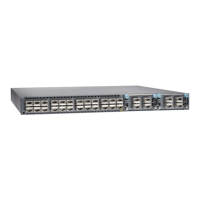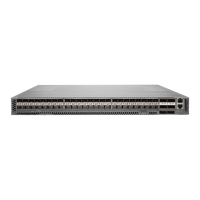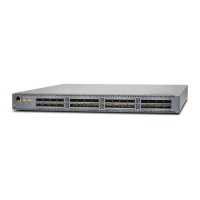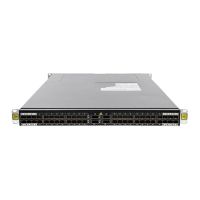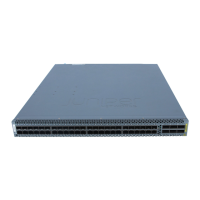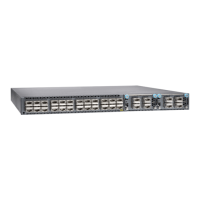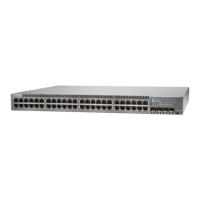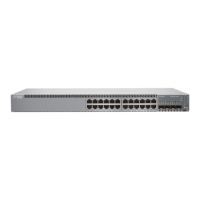Before you begin these calculations:
•
Ensure that you know the power requirements of different QFX3008-I Interconnect
device components. See “Power Requirements for a QFX3008-I Interconnect Device”
on page 139.
This topic describes these tasks:
•
Power Consumption of Different QFX3008-I Interconnect Device
Configurations on page 144
•
System Thermal Output for Different QFX3008-I Interconnect Device
Configurations on page 144
Power Consumption of Different QFX3008-I Interconnect Device Configurations
•
To calculate the maximum system power consumption for a QFX3008-I Interconnect
device with one 16-port QSFP+ front card installed:
Add the individual power requirements of all components in the chassis configuration.
See “Power Requirements for a QFX3008-I Interconnect Device” on page 139.
Thus, power consumption = Power requirements of: (Chassis) + 1 (16-port QSFP+
front card)
= 4500 W + 240 W
= 4740 W
•
To calculate the maximum system power consumption for a QFX3008-I Interconnect
device with eight 16-port QSFP+ front cards installed:
Add the individual power requirements of all components in the chassis configuration.
See “Power Requirements for a QFX3008-I Interconnect Device” on page 139.
Thus, power consumption = Power requirements of: (Chassis) + 8 (16-port QSFP+
front card)
= 4500 W + 8 (240 W)
= 4500 W + 1920 W
= 6420 W
System Thermal Output for Different QFX3008-I Interconnect Device Configurations
To calculate the system thermal output in British thermal units (BTU) per hour for your
device configuration, multiply the maximum system power consumption of the switch
by 3.41.
To calculate the system thermal output for a fully loaded QFX3008-I Interconnect device:
1. Compute the maximum system power consumption of a fully loaded configuration.
See maximum system power consumption for a fully loaded configuration device in
“Power Consumption of Different QFX3008-I Interconnect Device Configurations” on
page 144.
Copyright © 2012, Juniper Networks, Inc.144
QFX3000 Hardware Documentation
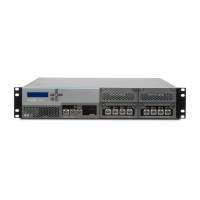
